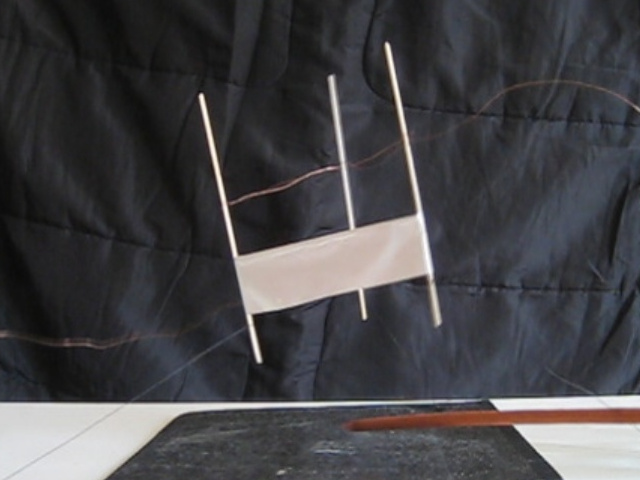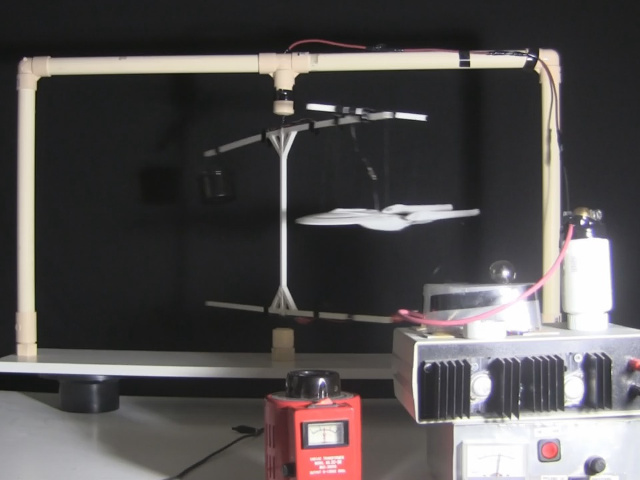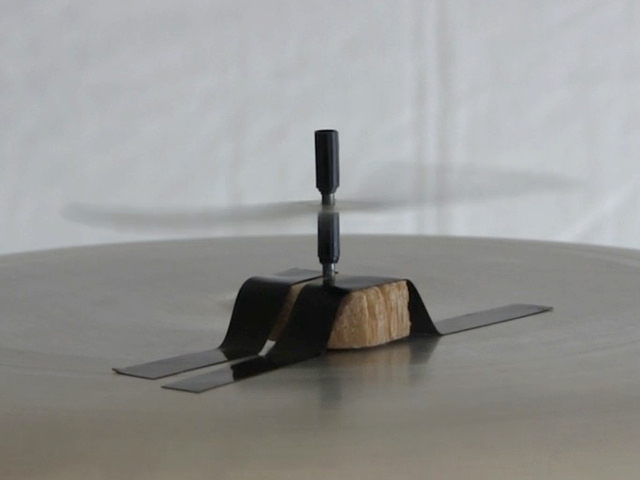How ion propulsion works (lifters, ionocraft, ion wind)
There are a variety of types of ion propulsion used in space but this page will focus on the types of ion propulsion used here on Earth for education, science projects and fun.
The examples shown below are:
- a lifter, which is a lightweight device that hovers in the air,
- a device spinning around as a rotor, in this case a Star Trek Enterprise model with ion propulsion added,
- an ion wind rotor (or spinner or pinwheel).
How ion propulsion works
All of the above examples work on the same principle and have the same basic parts:
- a sharp electrode, and
- a smooth electrode
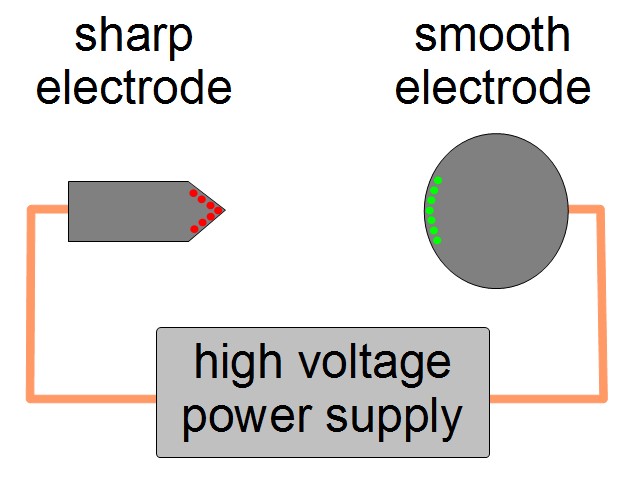
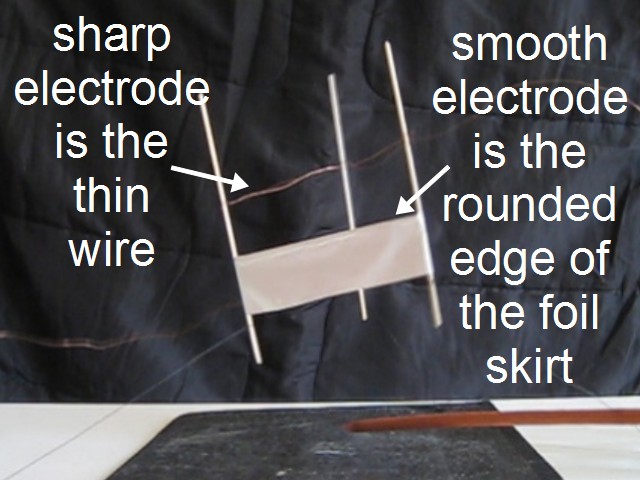
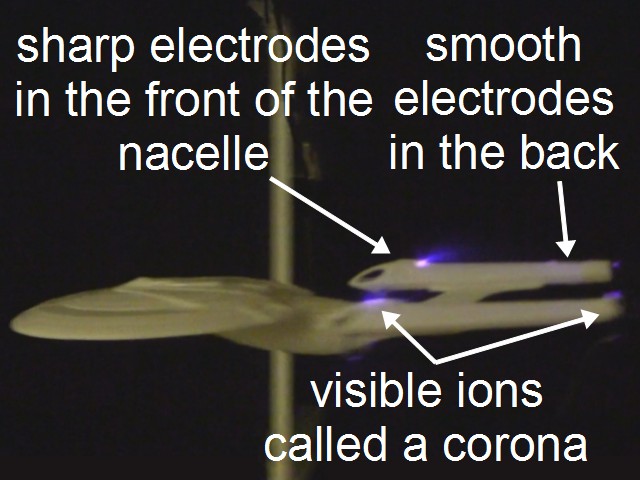
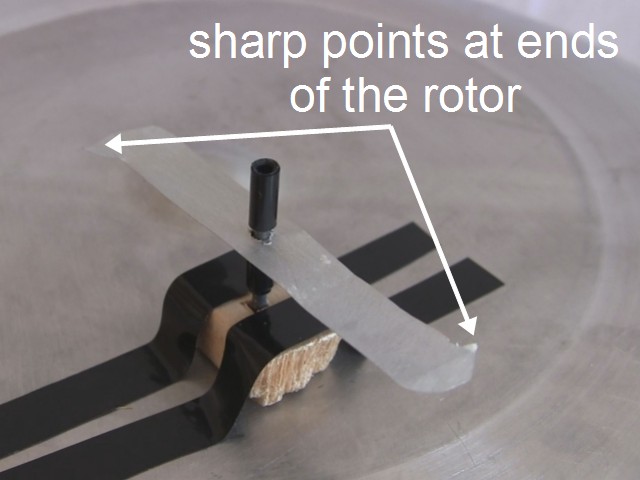
For the:
- lifter, the sharp electrode is a very thin, bare wire, and the smooth electrode is the foil skirt with rounded top.
- spinning rotor (Enterprise), the sharp electrodes are the sharp ends of thin wires inside the front the each nacelle, and the smooth electrode is the rounded edge of a rolled up foil cylinder inside the back of each nacelle.
- ion rotor, the sharp electrodes are the sharp points formed at the ends of the thin metal sheet, and the smooth electrode is the rest of the room, which is at ground potential.
To make it work, a high voltage is needed between the sharp electrode and the smooth electrode. For the lifter and Enterprise, this DIY 30kV DC power supply is used. For the ion rotor, it's sat on top of the dome of a big Van de Graaff generator. In the diagram below, a generic arrangement is shown.
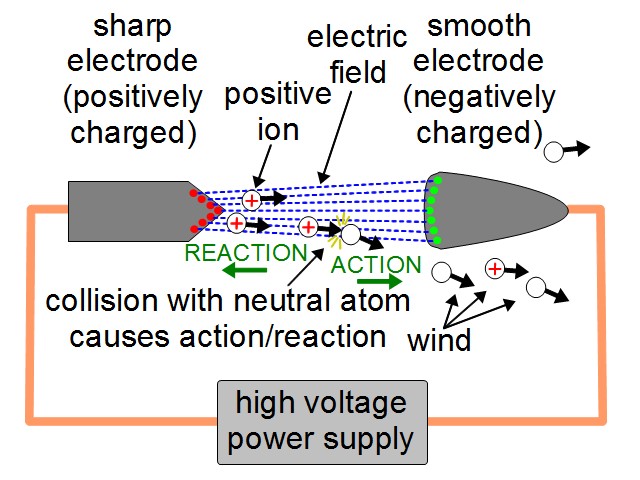
Due to the high voltage, an electric field exists between the two electrodes. The electric field is represented by the lines, which don't really exist. The lines just give an indication of the electric field's strength, the electric field is stronger where the lines are closer together.
Notice that the charges are packed tighter together at the sharp electrode due to that electrodes shape. That also means the electric field is stronger near there (lines closer together). The electric field is strong enough there to ionize the air there, producing positively charged atoms (positive ions). Since opposite charges attract, the positive ions are attracted toward the negatively charged smooth electrode.
So far nothing that's happened would produce any propulsion. The electric field is essentially like arms reaching out and tearing apart a sheet of paper in the air.
But as the positive ion continues toward the negatively charged smooth electrode, it collides with another atom that has a neutral charge. Since that atom's neutral, it doesn't interact with the electric field or the electrodes. It simply continues to fly away, hopefully avoiding the electrodes. However, during the collision, some momentum was imparted to the neutral atom in order to make it move, that being the action, and the reaction is the positively charged atom moving in the opposite direction. And that positive ion was in the grip of the electric field which is "connected" to the charges in the electrodes, which are part of the electrodes. Some propulsion just happened.
Most of the positive ions are attracted to the negative electrode where the pick up a negative electron and become neutral atoms again. But it's possible that some positive ions have enough energy to get away, but the "ion wind" is mostly neutral atoms.
Video - How Ion Propulsion, Lifters and Ionocrafts Work
The following explains how ion propulsion works in great detail with animations.
